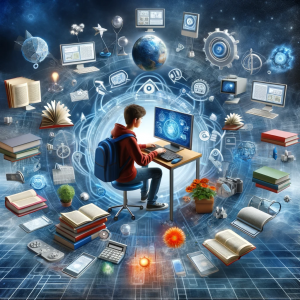
Reflecting on self-directed learning within blended learning contexts, it’s clear that the key to its effectiveness lies in harmonizing students’ learning intentions with the established learning goals. Blended learning, a dynamic educational model that combines synchronous and asynchronous learning, requires a well-thought-out structure and transparent communication to be successful. The primary challenge lies in creating an environment where both individual and group learning are driven by a clear purpose and intention, tailored to the students’ needs.
As an educator, it is essential to recognize the significance of aligning every task, whether synchronous or asynchronous, with both the educational objectives and the students’ personal learning intentions. While the educator’s intentions regarding what students should learn remain vital, these intentions must also be learner-centric. This approach requires a shift from traditional teaching methods, where educator-driven objectives predominate, to a more balanced perspective that equally values the students’ viewpoints and aspirations.
It’s insufficient for educators to simply encourage students to allocate time for self-paced, self-directed learning. A more nuanced approach is required. The BL environment should be designed to offer students choices, paired with explicit instructions about the learning intentions. This should include an estimation of the time required and recommendations for each task. The concept is akin to ‘nudging’ in behavioral economics, where subtle design changes in the BL environment are intended to significantly influence the students’ decision-making processes and behaviors, guiding them towards more goal-aligned learning choices.
For example, in a BL course on environmental science, a task might involve researching the impact of plastic pollution. The explicit instruction here would not just be to “research and present findings” but to “explore the socio-economic factors influencing plastic pollution, dedicating approximately two hours to research, and aligning findings with the broader topic of sustainable development.”
This approach requires educators to adopt a more facilitative role, guiding students through their learning journey. It’s about creating a learning space that empowers students, giving them the autonomy to make informed choices while keeping them aligned with their learning objectives. The design of the BL environment should reflect this philosophy, incorporating elements that encourage exploration, critical thinking, and application of knowledge.
As educators, we need to evolve from being mere conveyors of knowledge to architects of learning environments that stimulate, engage, and nurture self-directed learners. By doing so, we not only enhance the learning experience but also equip students with the skills to navigate an increasingly complex and ever-changing world.
Jan Akmal says:
Thank you Sharon — very insightful thoughts on learning outcomes and learning preferences considering not only the educator’s perspective but also the learner’s viewpoints and ambitions. I agree that learners would benefit from the blended activities addressing different learning styles. They should be assisted and guided for managing their time in the blended course context. A course orientation highlighting clear, organized, and consistent design that maps out all course requirements might be helpful in this. I agree with your view on educators that teaching is not merely a transfer of knowledge but also a transformative process that encourages learners to become critical thinkers in a positive and inclusive learning environment.
December 15, 2023 — 8:11 pm